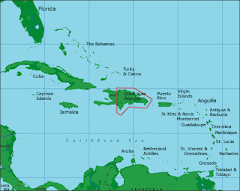When I moved to Abreu, a fellow volunteer gave me her laundry machine since she was COS-ing and heading back to the United States (thanks Iris!). So now I do my own laundry, and I have learned that it is nothing at all like doing laundry in the states.
To wash clothes here, you need three things: electricity, water, and sun. It is difficult to find a day when all three off those necessities are available. When dirty laundry starts piling up, I start looking for the perfect day. I wake up at 7 when I hear the click of the refrigerator turning on – llegó la luz! I now have approximately 5 hours to finish before the electricity goes out again. Now you’re probably thinking, “oh 5 hours…that’s more than enough time to wash a week’s worth of clothes.” Ha, you’re so wrong.
Luckily, in Abreu there is always water. Unluckily, in Abreu, the water comes from the river. So if it has been raining a lot lately, the water is filthy. I recently had to call Dad and ask him if my clothes would get clean if I washed them in water as dirty as Lake Wiley. He said no, but I had no other option.
So I start filling up buckets: 2 buckets of water go into the laundry machine with detergent. Then I set out two poncheras (large, wide buckets) and fill those with water as well. The laundry machine does not have a rinse cycle, so one of those poncheras is used to hand-rinse the clothes. The other is used to soak the clothes in fabric softener.
Now there is a certain order to the clothes that need to be washed. Whites go first with a little bit of bleach, then sheets and towels because the water is clean. Then go the other clothes, according to their place on the dark color scale. After every second or third load, I have to change out all of the water to keep it clean.
After the clothes soak in a bit of suavetel, I run them through the dryer, which in fact does not dry the clothes. It is more like a wringer. It gets out all of the excess water, but does not actually dry the clothes. That’s when the sun comes in to play. The clothes then get hung out to line-dry. My clothesline is actually the electricity cable strung outside the house. Once all of the clothes are hung on the line, I still am not technically free from the chore. I have to stay in the house all day because if a storm sweeps in, as they often do on the north coast of this Caribbean island, I have to run out and collect all the clothes before the rain starts. Then I wait for the sun to appear again, and repeat the process until the day ends, night falls and I finally have clean (although a little dingy from the river water), dry clothes.


